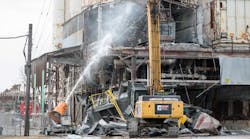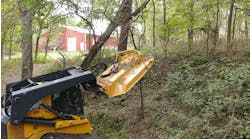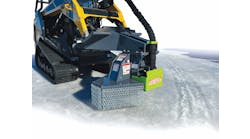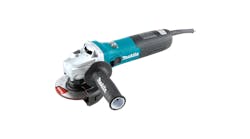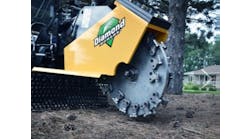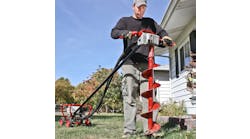DustBoss has officially unveiled the next advancement in industrial dust suppression, a powerful cannon that is designed to fight dust with maximum efficiency, the company said.
Developed in response to the needs of customers in areas with variable winds, the DB-60 Surge features water propelled at high velocity from a center nozzle, combined with a fan and misting ring system. With three remote-controlled stages and precision oscillation for optimum command over water volume and coverage area, the cannon uses high-powered jets that surge through the wind for more than 250 feet (76.2 m) to suppress both surface and airborne dust.
The result is a dust control solution for outdoor operations ranging from demolition to port facilities and bulk material processing to storage.
“Our customers operate in very different circumstances; some with high-reach excavators, some in open areas without natural barriers, while others are located in narrow corridors where wind velocity is amplified,” explained BossTek Dust Control specialist, Mike Lewis. “What these customers have in common is the difficulty in controlling fine atomized mist during blustery conditions. So, we worked with our industry partners, listened to their feedback and engineered our most versatile and innovative machine to date.”
Lewis recalled that one of the initial drivers behind the new design was a need in the demolition industry.
“Several customers described their challenges in suppressing dust during demolition of high-rise structures,” he said. “Some of them use attachments that can be mounted on a high-lift boom, but that can bring its own complications. When we started working on a solution, we realized that this technology would also deliver benefits to a wide range of applications in which variable wind conditions can be a problem, such as port facilities, material processing operations and large outdoor storage facilities.”
The DB-60 Surge combines the power of an industrial fan, misting ring and heavy-duty barrel with the reach and force of a central high-pressure spray nozzle. The pressurized spray resists wind shear and even uses the force of the wind to further fragment and carry the droplets, enhancing its dust suppression capabilities. This is achieved without the need for the high-water output associated with a hydrant-dependent hose or industrial sprinkler system.
In high-wind situations, dust is lifted into the atmosphere and carried beyond the site line over long distances, which can lead to permit violations. Operators of bulk storage mounds, demolition sites, ports, or recycling material piles often mitigate particulate emissions using a sprinkler or hose to saturate a material’s surface. The higher the wind, the more water pressure is required to break through the shear, resulting in greater amounts of water filling the surrounding work area -- often 300 GPM (1135 lpm) or more.
There are several issues associated with the use of hoses and industrial sprinklers, the company said. Hoses typically require manual labor, removing workers from other critical tasks. Moreover, both sprinklers and hand-held hoses contribute to high water bills. Taking compliance and expenses into consideration, the long-term cost of operation for sprinklers and hoses is higher than it might appear.
